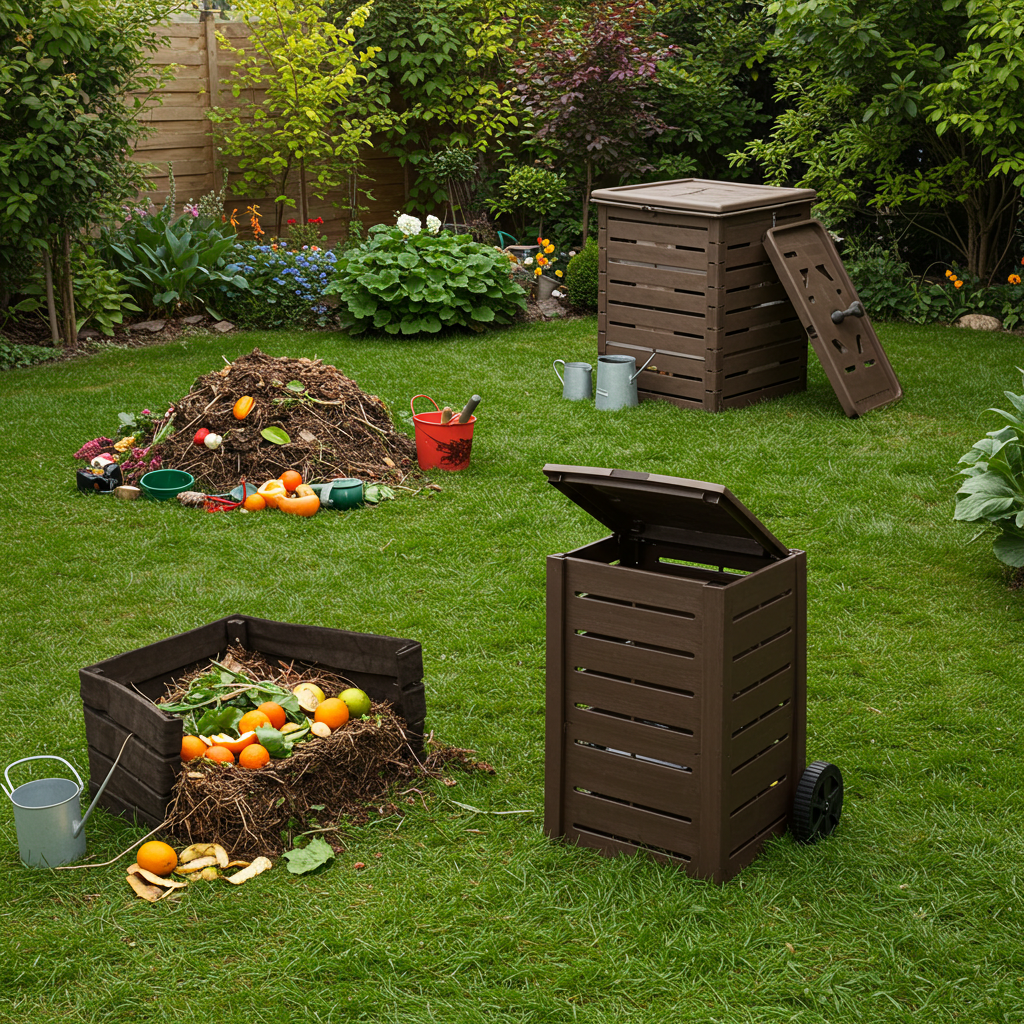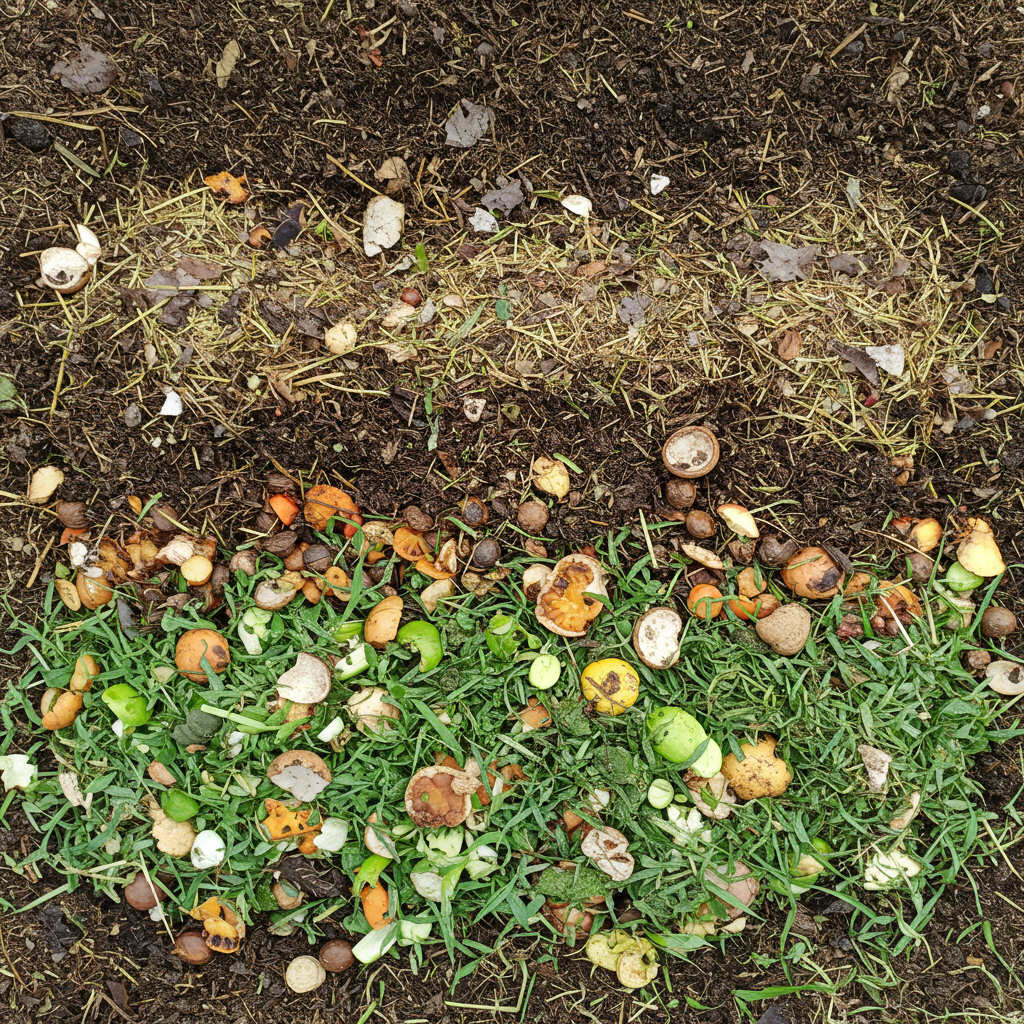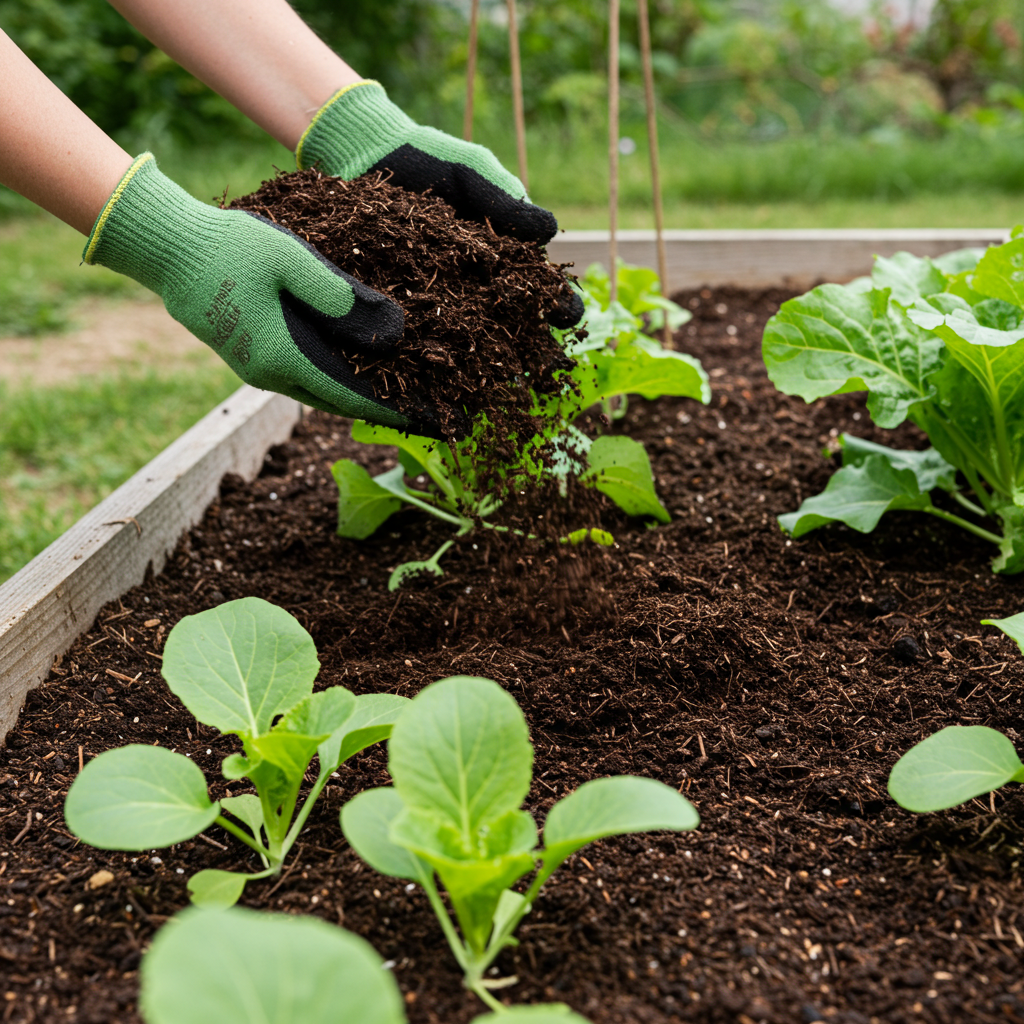Transform your garden, reduce household waste, and embrace sustainability through composting! Often called “black gold,” nutrient-rich compost turns kitchen scraps and yard waste into a powerful soil amendment. It supercharges plant growth, improves soil health, and significantly lessens your environmental footprint. This guide covers everything you need to start your successful home composting journey.
Why Compost? The Unsung Hero of Your Garden
Composting offers incredible benefits:
- Enhanced Soil Health: Improves soil structure, making clay soils lighter and sandy soils better at retaining water. Fosters beneficial microorganisms.
- Natural Nutrient Source: Provides slow-release, balanced nutrients, promoting robust plant growth without synthetic fertilizers.
- Water Conservation: Compost-rich soil holds water better, reducing watering frequency.
- Waste Reduction: Diverts organic waste from landfills, cutting methane emissions.
- Pest & Disease Resistance: Healthy soil supports resilient plants, reducing the need for chemical interventions.
- Cost Savings: Lessens or eliminates the need for bagged soil amendments and chemical fertilizers.
The Science Behind the Magic: How Composting Works
Composting is controlled decomposition by microscopic organisms (bacteria, fungi). These microbes break down organic materials into stable, dark humus. They need four key elements:
1. Carbon (Browns): Energy source.
2. Nitrogen (Greens): Fuels microbial reproduction.
3. Oxygen: Needed by aerobic microbes.
4. Moisture: Crucial for microbial function.
Balancing these ensures efficient decomposition.
Choosing Your Composting Method
Your ideal method depends on space, waste volume, and involvement. Popular options:
1. Simple Compost Pile (Open Pile)
- Pros: Easiest, cheapest, handles large volumes.
- Cons: Requires space, untidy, slower, may attract pests.
- Ideal for: Large yards, significant yard waste.
2. Compost Bins
Offer contained, often faster composting.
- Stationary Bins: Pallet, wire mesh, or plastic units. Contain pile, retain heat, neater. Turn with tools.
- Compost Tumblers: Sealed, rotating bins for easy turning. Speed decomposition, pest-resistant, less messy. Great for smaller yards or faster results.
3. Vermicomposting (Worm Composting)
- Pros: Indoors/small spaces, rich worm castings, minimal odor.
- Cons: Specific worms, not all waste, slower for large volumes.
- Ideal for: Apartment dwellers, small-scale waste.
The Golden Ratio: Balancing “Browns” and “Greens”
Balance carbon-rich “browns” and nitrogen-rich “greens” for vital composting. Aim for 2-3 parts browns to 1 part greens by volume.
Carbon-Rich “Browns” (Slow to Decompose)
Provide carbon and airflow. Typically dry:
- Dried leaves, straw, wood chips (sparingly), shredded paper/cardboard (non-glossy), small twigs, pine needles (moderation), corn stalks.
Nitrogen-Rich “Greens” (Fast to Decompose)
Fuel microbial activity, generate heat. Typically fresh and moist:
- Fruit/vegetable scraps, grass clippings (thin layers), coffee grounds, tea bags, fresh plant trimmings (no seeds), herbivore manure, crushed eggshells.
Excess greens cause odor/sliminess. Excess browns lead to slow decomposition. Adjust as you learn!
What Belongs in Your Compost? (The Good Stuff)
- Kitchen Scraps: Fruit/veg peels, cores, seeds, stems, coffee grounds, tea bags, eggshells, stale bread, cereal.
- Yard Waste: Leaves, grass clippings, small twigs, straw, hay, non-diseased plant trimmings, spent flowers.
- Other: Shredded newspaper (black/white), plain cardboard, wood ash (untreated wood, moderation), sawdust (untreated wood, moderation).
What to Keep Out of Your Compost (The No-Gos)
Avoid these to prevent pests, odors, and health risks:
- Meat, Bones, Fish: Attract pests, odors, pathogens.
- Dairy & Oily Foods: Attract pests, unpleasant smells.
- Diseased Plants: Spreads pathogens.
- Weeds with Seeds: May sprout.
- Pet Waste (Dogs/Cats): Harmful pathogens.
- Treated Wood: Leaches chemicals.
- Chemicals/Pesticides: Harm microbes and garden.
Setting Up Your Compost Haven: A Step-by-Step Guide
Build your compost pile or fill your bin easily:
1. Choose Spot: Shady, well-drained, accessible, away from structures.
2. Build Base: 4-6 inch layer of coarse browns (branches, straw) for aeration/drainage.
3. Layer Materials: Alternate 6-8 inches browns, 2-4 inches greens. Cover greens with thin soil/compost.
4. Moisten: Each layer damp, like a wrung-out sponge – moist, not soaking wet.
5. Chop it Up! Smaller pieces break down faster. Chop scraps, shred paper, break twigs.
Maintaining Your Pile: Active Composting
Ongoing care ensures efficient breakdown:
1. Maintain Moisture: Check regularly. Add water if dry. If too wet/smelly, add dry browns and turn.
2. Aerate (Turn) Regularly: Turn weekly/bi-weekly for oxygen. Distributes heat/moisture. Tumblers simplify.
3. Observe and Adjust:
* Bad Odor: Too much nitrogen/wet. Add browns, turn.
* Slow Decomposition: Too dry, not enough nitrogen, needs aeration. Add greens, water, turn.
* Pests: Remove tempting scraps. Cover new additions with browns/soil.
Harvesting Your Black Gold: When is it Ready?
Finished compost should exhibit these characteristics:
- Appearance: Dark brown/black, crumbly, uniform texture. Original materials unidentifiable.
- Smell: Earthy and fresh, like forest floor soil. No unpleasant odors.
- Temperature: Cool to the touch (active piles are hot).
Maturation takes 2-3 months for hot piles (tumblers) or 6 months to over a year for slower piles.
Putting Your Compost to Work: Enriching Your Garden
Utilize your finished compost effectively:
- Garden Beds: Incorporate 1-3 inches into topsoil before planting. Improves fertility/structure.
- Top Dressing: Sprinkle a thin layer (1/2 inch) around established plants, trees, shrubs. Nutrients slowly release.
- Potting Mix: Mix with perlite, vermiculite, peat moss/coconut coir for custom, nutrient-rich container mixes.
- Lawns: Sift and spread a 1/4 inch layer over lawn in spring/fall for soil health/vigor.
- Seed Starting: Fine, sifted compost with other components creates an excellent germination medium.
Reap the Rewards: The Lasting Benefits of Composting
Making your own compost is impactful for your garden and the environment. You’ll see healthier, more productive plants, rely less on store-bought amendments, and reduce waste. It’s a satisfying, sustainable cycle that benefits all.
Conclusion
Compost creation is rewarding and simple. Understanding browns and greens, choosing a method, and maintaining your pile consistently produces nutrient-rich “black gold.” It nourishes your garden and helps create a healthier planet. Gather your scraps and start composting today – your plants and the earth will thrive!



